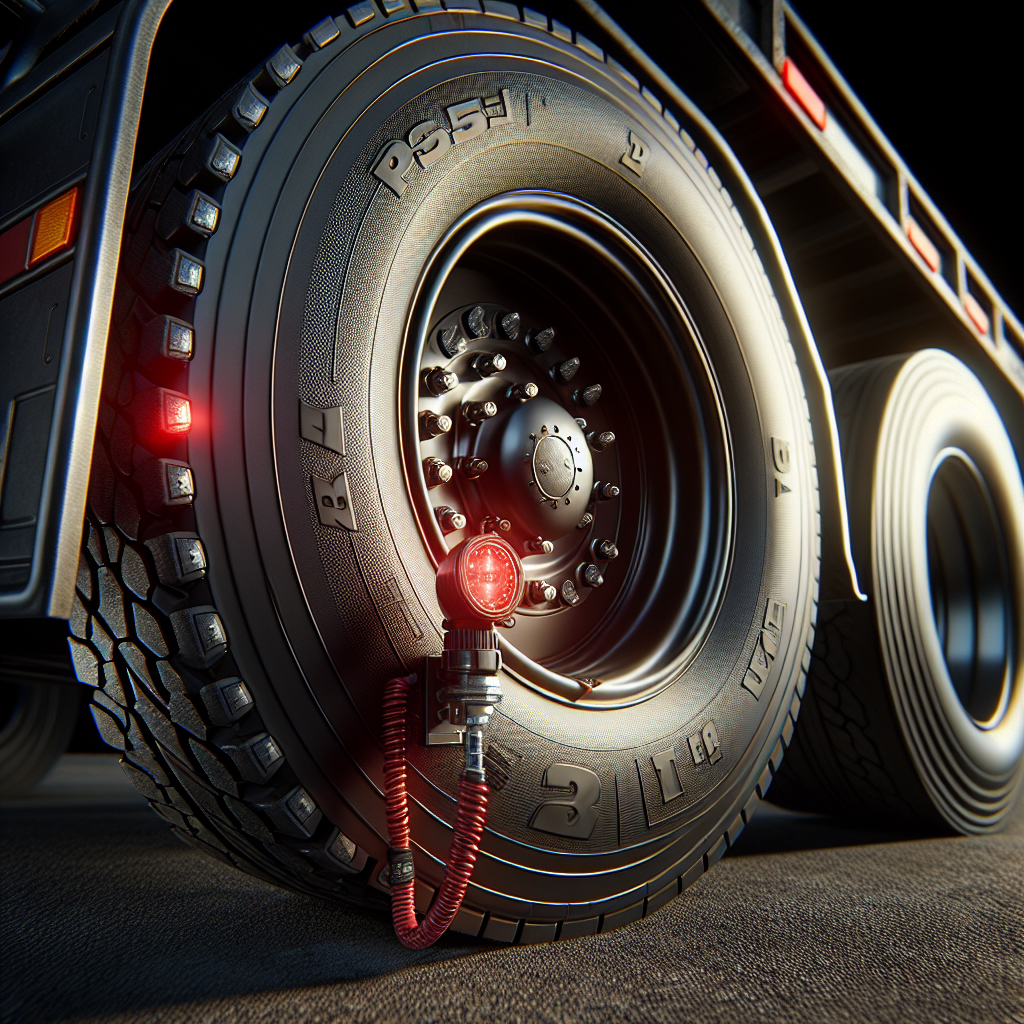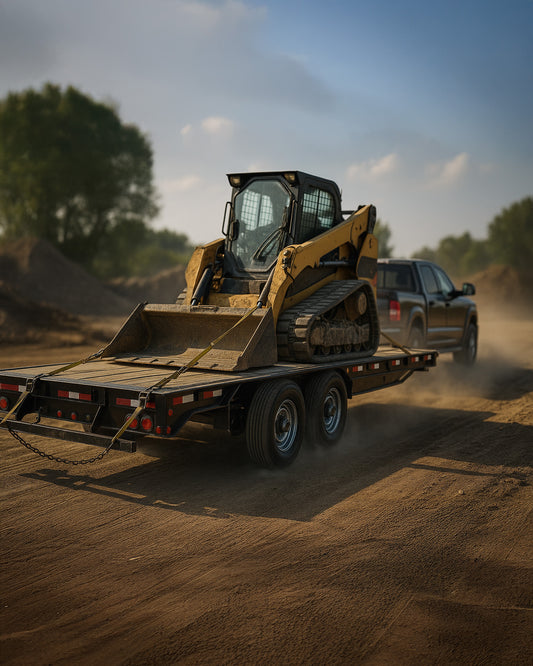

Maintaining the right tire pressure is crucial for the safety and efficiency of your trailer. The trailer PSI light serves as an essential tool in monitoring tire pressure, acting as an early warning system for potential issues. When this light activates, it indicates that the tire pressure has fallen below the optimal level, which can lead to several safety hazards.
Proper tire pressure ensures:
- Enhanced Safety: Under-inflated tires can cause blowouts, loss of control, and increased stopping distances. The PSI light helps you address these risks before they escalate.
- Improved Fuel Efficiency: Correct tire pressure minimizes rolling resistance, allowing your vehicle to operate more efficiently and saving you money on fuel.
- Prolonged Tire Life: Consistently monitoring tire pressure can help prevent uneven wear and extend the lifespan of your tires, ultimately leading to lower replacement costs.
By understanding the importance of the trailer PSI light, trailer owners can take proactive measures to maintain their equipment and ensure safe towing experiences. Tow with peace of mind, knowing that trailerwatchdog is standing guard.
How Trailer PSI Light Functions and Indicates Issues

The trailer PSI light is an integral component of modern trailer safety systems, designed to monitor and alert you to changes in tire pressure. When the pressure in one or more tires drops below a preset threshold, the PSI light activates, sending a visual signal to the driver.
This functionality is typically achieved through a series of sensors installed within the tires or on the trailer's axle. These sensors continuously measure the tire pressure and relay this information to the vehicle's onboard computer system. When a significant drop in pressure is detected, the system triggers the PSI light, indicating that action is needed.
There are a few common scenarios that can cause the trailer PSI light to illuminate:
- Under-inflation: This is the most common reason for the PSI light activation, often caused by natural air loss, punctures, or leaks.
- Over-inflation: While less common, over-inflated tires can also trigger the light, particularly if the pressure exceeds the manufacturer's recommended limits.
- Temperature Fluctuations: Changes in temperature can affect tire pressure. A significant drop in temperature can lead to under-inflation, prompting the PSI light to activate.
Understanding how the trailer PSI light functions is essential for effective trailer maintenance and safety. By responding promptly to these alerts, you can prevent potential tire failures and ensure a smoother towing experience.
Common Causes of Trailer PSI Light Activation

The activation of the trailer PSI light can be alarming for any driver, signaling potential issues that need immediate attention. Understanding the common causes of this activation can help you take proactive measures to maintain your trailer's safety and performance.
Here are the primary reasons why the PSI light may activate:
Protect your trailer
- Air Leaks: One of the most frequent causes of PSI light activation is a leak in the tire. This can occur due to punctures, small abrasions, or even valve stem issues that allow air to escape, leading to a drop in tire pressure.
- Temperature Changes: Tires are sensitive to temperature fluctuations. A sudden drop in ambient temperature can cause the air inside the tires to contract, leading to lower pressure readings and triggering the PSI light.
- Poor Maintenance: Neglecting regular tire maintenance, such as insufficient inflation checks or not rotating tires, can lead to uneven wear and pressure loss, prompting the PSI light to activate.
- Damaged Sensors: In some cases, the sensors responsible for measuring tire pressure may become damaged or malfunction. This can result in erroneous readings and cause the PSI light to illuminate, even if the tire pressure is adequate.
- Overloading the Trailer: Exceeding the weight limit of your trailer can put excessive stress on the tires, leading to increased heat and pressure fluctuations that may trigger the PSI light.
By being aware of these common causes, you can better prepare for potential issues and take appropriate actions to ensure your trailer remains safe and reliable on the road.
Steps to Troubleshoot Trailer PSI Light Alerts

When you notice the trailer PSI light illuminating, it’s essential to act swiftly to identify and resolve the underlying issue. Troubleshooting can help you avoid further complications and ensure your safety on the road. Here’s a step-by-step guide to effectively troubleshoot trailer PSI light alerts:
- Check Tire Pressure: Begin by using a reliable tire pressure gauge to measure the pressure in each tire. Compare the readings to the manufacturer’s recommended levels, often found on the trailer's information placard.
- Inspect for Leaks: If the tire pressure is low, inspect the tires for visible signs of damage, such as punctures or cracks. Additionally, listen for any hissing sounds that could indicate air escaping.
- Examine Valve Stems: Inspect the valve stems for cracks or leaks. Ensure that the valve caps are securely in place and not damaged, as this can also affect tire pressure.
- Monitor Temperature: Consider the temperature conditions. Cold weather can cause temporary drops in tire pressure. If it’s a chilly day, allow the tires to warm up from driving before taking pressure readings.
- Reset the System: If the pressure readings are normal but the PSI light remains on, try resetting the trailer’s tire pressure monitoring system (TPMS) according to the manufacturer’s instructions. This may clear any erroneous alerts.
- Visit a Professional: If you are unable to identify the cause or if the PSI light remains illuminated despite troubleshooting, it’s wise to consult a professional mechanic or trailer specialist. They can perform a thorough inspection and diagnose any underlying issues.
Following these steps can help you effectively manage trailer PSI light alerts and maintain optimal safety while towing.
Best Practices for Maintaining Trailer Tire Pressure
Maintaining proper tire pressure is crucial for safe and efficient towing. Adhering to best practices for your trailer's tire pressure can significantly enhance performance, fuel efficiency, and overall safety. Here are some essential tips to help you keep your trailer tires in optimal condition:
- Regular Pressure Checks: Make it a habit to check the tire pressure at least once a month and before long trips. Use a high-quality tire pressure gauge to ensure accurate readings.
- Follow Manufacturer Recommendations: Always refer to the trailer's documentation for the recommended tire pressure. This information is crucial as it takes into account the trailer's weight and intended use.
- Monitor Temperature Effects: Tire pressure can fluctuate with temperature changes. Be aware that tire pressure decreases in colder weather and increases in warmer conditions. Adjust accordingly to maintain optimal levels.
- Inspect Tires for Damage: Regularly inspect your tires for signs of wear, such as cracks, blisters, or foreign objects lodged in the tread. Address any issues immediately to prevent blowouts or tire failure.
- Rotate Tires: Just like with vehicles, rotating your trailer tires can promote even wear and extend their lifespan. Follow the manufacturer’s guidelines for rotation intervals.
- Keep an Eye on Load Levels: Ensure that your trailer is not overloaded, as excessive weight can lead to increased tire wear and pressure loss. Adhere to the load capacity ratings specified by the manufacturer.
- Utilize a Monitoring System: Consider investing in a trailer tire pressure monitoring system (TPMS) that provides real-time pressure readings and alerts you to any changes. This technology can enhance your awareness and response to potential issues.
By incorporating these best practices into your routine, you will not only enhance your trailer's performance but also ensure a safer towing experience.
Integrating Smart Trailer Technology for Monitoring

In today’s fast-paced world, integrating smart technology into your trailer can significantly improve safety and efficiency. A smart trailer equipped with advanced monitoring systems allows you to keep an eye on critical components, including tire pressure, axle temperature, and more. This proactive approach not only enhances performance but also reduces the risk of catastrophic failures on the road.
Utilizing a trailer monitoring system means you can receive real-time data directly to your mobile device or dashboard. This feature empowers you to:
- Monitor Tire Pressure: Consistently track the trailer PSI light and receive alerts when pressure drops below safe levels, helping you avoid blowouts and improve fuel efficiency.
- Check Axle Temperatures: Keep an eye on axle temperatures to prevent overheating, which can lead to significant damage and costly repairs.
- Receive Alerts: Set up customizable alerts for various conditions, allowing you to take immediate action if something goes wrong.
- Enhance Maintenance Scheduling: Use data insights to determine optimal maintenance schedules and avoid unexpected breakdowns.
By integrating smart trailer technology, you're investing in a safer and more reliable towing experience. This technology not only supports you in maintaining your trailer’s health but also provides peace of mind during your journeys.
Tow with peace of mind, knowing that trailerwatchdog is standing guard.




